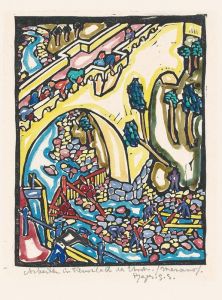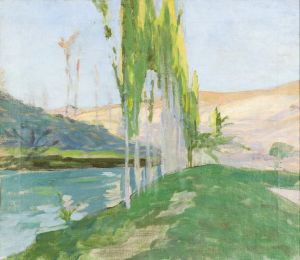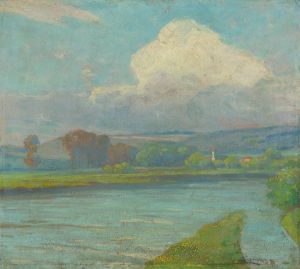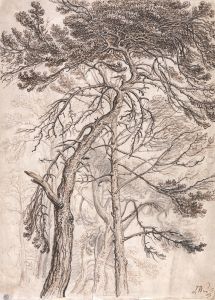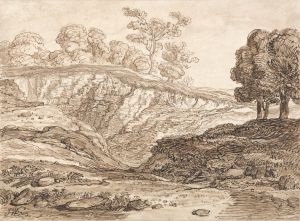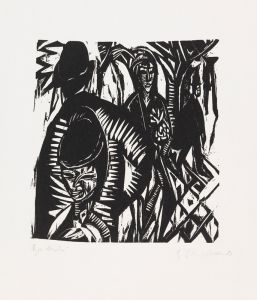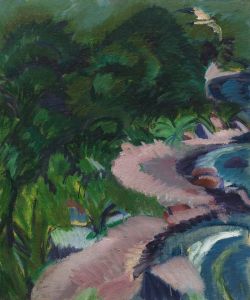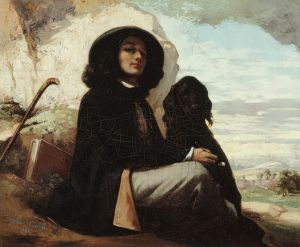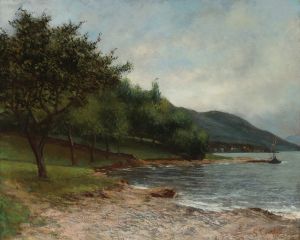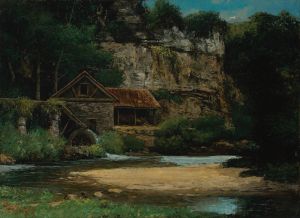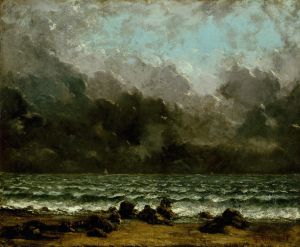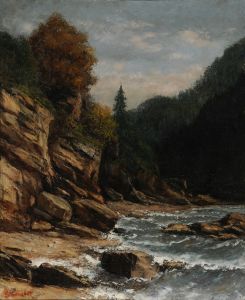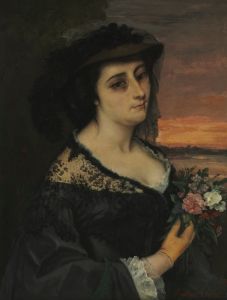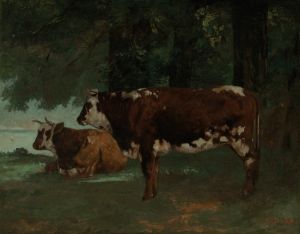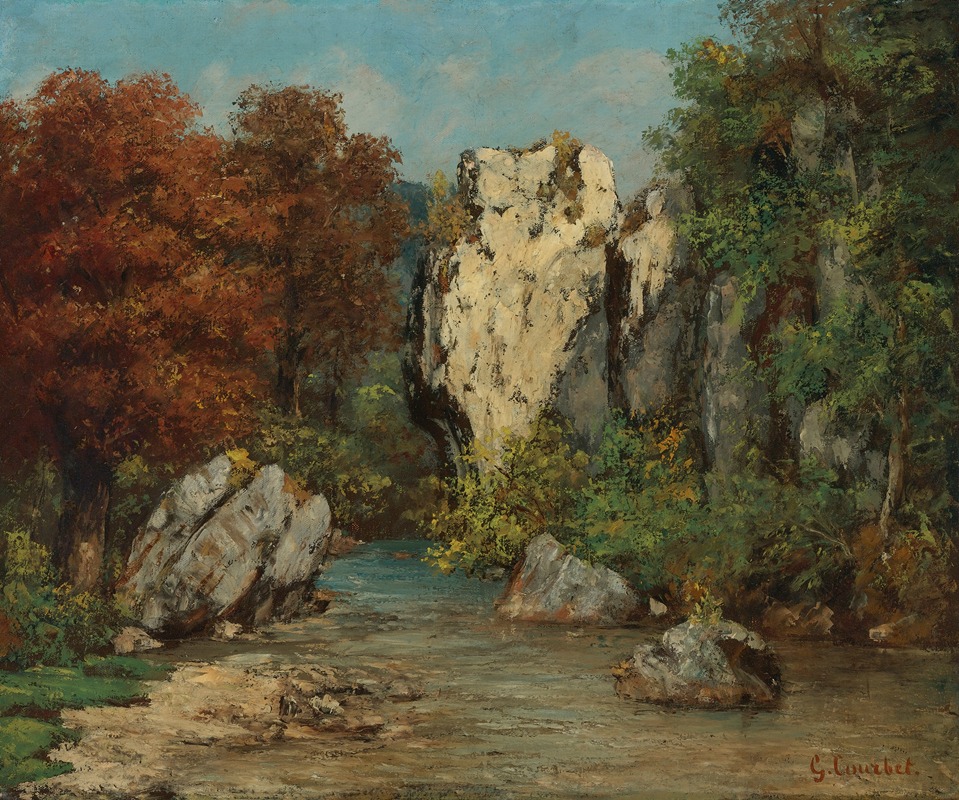
Paysage Au Ruisseau Et Au Rocher
A hand-painted replica of Gustave Courbet’s masterpiece Paysage Au Ruisseau Et Au Rocher, meticulously crafted by professional artists to capture the true essence of the original. Each piece is created with museum-quality canvas and rare mineral pigments, carefully painted by experienced artists with delicate brushstrokes and rich, layered colors to perfectly recreate the texture of the original artwork. Unlike machine-printed reproductions, this hand-painted version brings the painting to life, infused with the artist’s emotions and skill in every stroke. Whether for personal collection or home decoration, it instantly elevates the artistic atmosphere of any space.
Gustave Courbet, a prominent figure in the 19th-century French art scene, is renowned for his pioneering role in the Realist movement. One of his works, "Paysage Au Ruisseau Et Au Rocher" (translated as "Landscape with Stream and Rock"), exemplifies his dedication to capturing the natural world with authenticity and precision.
Courbet was born in 1819 in Ornans, a small town in the Franche-Comté region of France. This region, with its rugged landscapes and rural charm, profoundly influenced his artistic vision. Courbet's commitment to realism was a reaction against the dominant Romantic and Neoclassical styles of his time, which often idealized subjects. Instead, Courbet sought to depict the world as it was, focusing on everyday scenes and the beauty of the natural environment.
"Paysage Au Ruisseau Et Au Rocher" is a testament to Courbet's skill in landscape painting. Although specific details about the creation date and current location of this painting are not widely documented, it is consistent with Courbet's broader body of work from the mid-19th century, a period when he produced numerous landscapes. These works often featured elements such as streams, rocks, and dense foliage, capturing the essence of the French countryside.
Courbet's technique in landscape painting was characterized by his use of a palette knife, which allowed him to apply thick layers of paint, creating texture and depth. This method was instrumental in conveying the tactile quality of natural elements like rocks and water. His landscapes often exhibit a dynamic interplay of light and shadow, enhancing the realism and mood of the scene.
The subject matter of "Paysage Au Ruisseau Et Au Rocher" aligns with Courbet's philosophy of art. He believed that art should be a direct reflection of the artist's experience and environment. By focusing on a simple yet evocative scene of a stream and rocks, Courbet invites viewers to appreciate the inherent beauty of nature, free from embellishment or idealization.
Courbet's landscapes, including "Paysage Au Ruisseau Et Au Rocher," played a significant role in the evolution of modern art. His emphasis on realism and his innovative techniques influenced subsequent generations of artists, paving the way for movements such as Impressionism. Artists like Claude Monet and Camille Pissarro drew inspiration from Courbet's approach to capturing light and atmosphere.
In addition to his artistic contributions, Courbet was known for his political activism. He was a vocal advocate for social change and used his art to challenge societal norms. This commitment to realism and truth extended beyond his canvases, reflecting his broader worldview.
While "Paysage Au Ruisseau Et Au Rocher" may not be as widely recognized as some of Courbet's other works, such as "The Stone Breakers" or "A Burial at Ornans," it remains an important piece within his oeuvre. It encapsulates the essence of Courbet's artistic mission: to portray the world with honesty and to find beauty in the ordinary.
In summary, Gustave Courbet's "Paysage Au Ruisseau Et Au Rocher" is a quintessential example of his realist approach to landscape painting. Through his innovative techniques and dedication to depicting the natural world, Courbet left an indelible mark on the art world, influencing countless artists and shaping the course of modern art.





